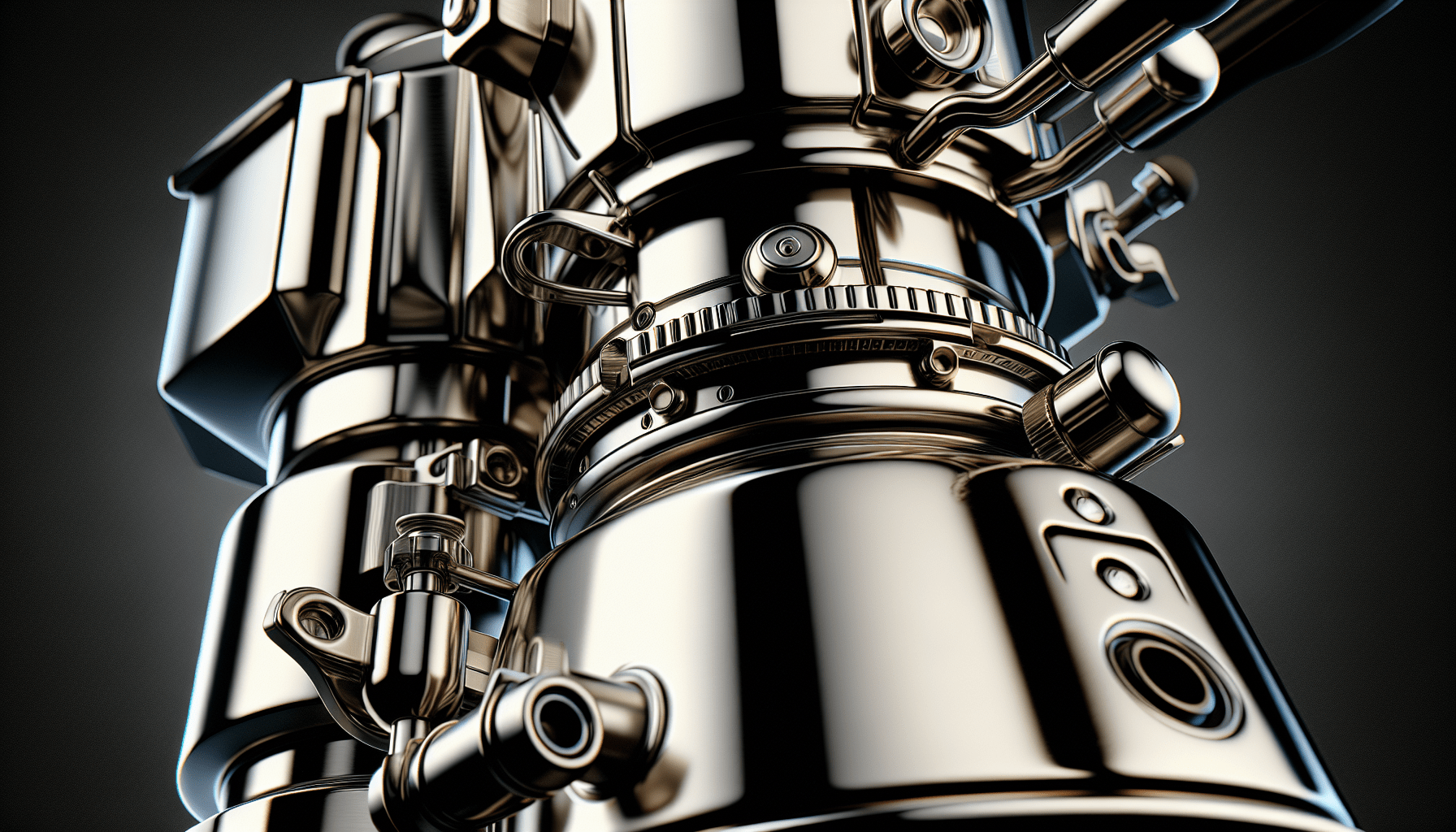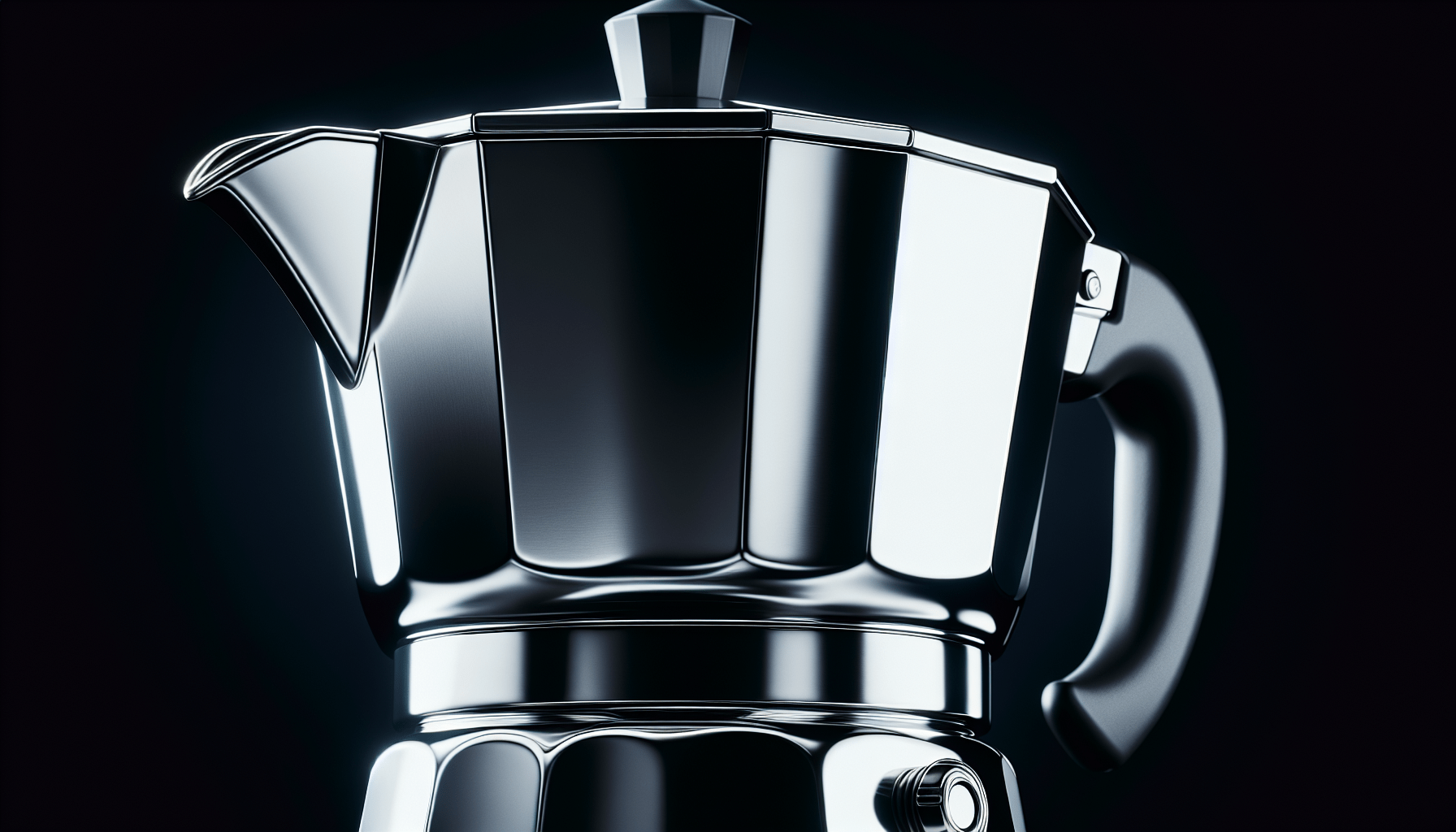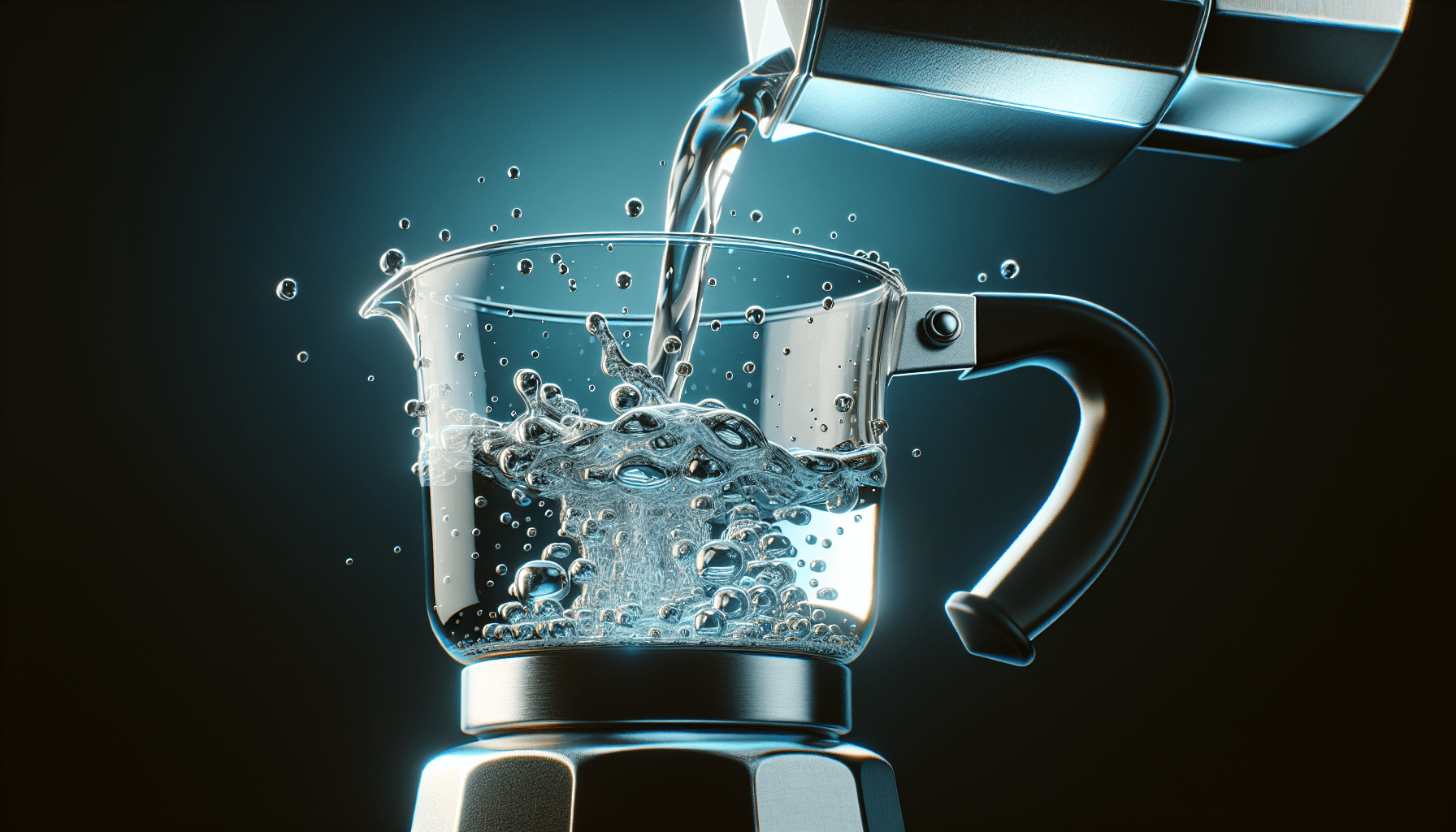If you’re a coffee lover and enjoy the rich, intense flavor of espresso, then you may find yourself drawn to the simplicity and charm of a stovetop espresso maker. These compact and versatile devices are a popular choice for those seeking a quick and convenient way to brew a strong cup of coffee. In this article, we’ll explore the various components that make up a stovetop espresso maker, helping you understand how each part contributes to the brewing process and enabling you to create the perfect cup of espresso from the comfort of your own home.
Boiler
The boiler is the main component of a stovetop espresso maker. It is where the water is placed and heated to create the pressure needed to brew the coffee. The boiler is usually made of durable stainless steel or aluminum and is designed to withstand high heat. It is the heart of the espresso maker and plays a crucial role in extracting the rich and aromatic flavors of the coffee.
Upper Chamber
The upper chamber of the boiler is where the freshly brewed espresso collects. It is the top part of the espresso maker and is connected to the lower chamber through a percolator tube. The upper chamber is where you will find the coffee basket, which holds the coffee grounds. As the water in the lower chamber heats up and builds pressure, it is forced through the percolator tube and into the upper chamber, where it interacts with the coffee grounds to produce the delicious espresso.
Lower Chamber
The lower chamber of the boiler is where the water is placed for brewing. It is the bottom part of the espresso maker and is directly connected to the heat source. The lower chamber is designed to hold the perfect amount of water needed to create the desired amount of espresso. As the water in the lower chamber is heated, it starts to build pressure, which then forces the hot water up through the percolator tube and into the upper chamber to brew the coffee.
Safety Valve
The safety valve is an important feature in a stovetop espresso maker. It is a small valve located on the side of the boiler that releases excess pressure to prevent any accidents or damage. The safety valve ensures that the pressure inside the espresso maker does not exceed the safe limit, giving you peace of mind while brewing your espresso. It is essential to have a properly functioning safety valve to ensure a safe and enjoyable brewing experience.
Gasket
The gasket is a small but crucial part of a stovetop espresso maker. It is a rubber seal that creates a tight and secure seal between the upper and lower chambers of the boiler. The gasket prevents any leaks or steam from escaping during the brewing process, ensuring that all the pressure is directed towards brewing the coffee. It is important to regularly check and replace the gasket if necessary to maintain the optimum performance of your espresso maker.
Rubber Seal
The rubber seal, also known as the gasket, is typically made of high-quality silicone or rubber. It is specifically designed to withstand high heat and pressure without deteriorating or losing its seal. The rubber seal creates a tight closure between the upper and lower chambers, ensuring that no steam or pressure is lost during the brewing process. It is important to clean and inspect the rubber seal regularly to maximize its lifespan and ensure a proper seal for a perfect cup of espresso.
Filter Funnel
The filter funnel is an essential part of a stovetop espresso maker as it holds the coffee grounds during the brewing process. It is usually made of stainless steel or aluminum, which allows it to withstand the high temperatures and pressure involved in brewing espresso. The filter funnel sits inside the upper chamber and holds the coffee grounds securely, allowing the hot water to pass through and extract the flavors and aromas of the coffee beans.
Coffee Basket
The coffee basket is the part of the filter funnel where you place the coffee grounds. It is usually removable, making it easy to fill with coffee grounds and clean after use. The coffee basket is designed to hold the optimal amount of coffee grounds for brewing a perfect cup of espresso. It is important to measure the right amount of coffee grounds according to your desired strength and adjust the grind size to achieve the best results.
Filter Plate
The filter plate is a perforated plate located at the bottom of the filter funnel. It acts as a barrier between the coffee grounds and the upper chamber, allowing the hot water to pass through while preventing the coffee grounds from entering the brewed espresso. The filter plate ensures a smooth and clean extraction process, resulting in a rich and flavorful cup of espresso.
Percolator Tube
The percolator tube is a long and narrow tube that connects the lower chamber of the boiler to the upper chamber. It serves as a passage for the hot water and steam to flow upward, forcing the brewed espresso into the upper chamber. The percolator tube is designed to withstand high pressure and heat, ensuring the smooth and efficient extraction of the coffee. It is important to keep the percolator tube clean and free from any blockages to maintain the proper flow and performance of your stovetop espresso maker.
Handle
The handle of a stovetop espresso maker is an essential part that allows you to handle the unit safely. It is usually made of heat-resistant materials like plastic or rubber to ensure a comfortable grip while protecting your hands from the heat generated during the brewing process. The handle is strategically positioned to stay cool to the touch, allowing you to safely move and pour the brewed espresso without the risk of burns. A sturdy and ergonomic handle is crucial for a hassle-free brewing experience.
Lid
The lid of a stovetop espresso maker is the cover that fits tightly on top of the upper chamber. It plays a crucial role in maintaining the pressure and heat inside the espresso maker during the brewing process. The lid is typically made of heat-resistant materials like stainless steel or aluminum to withstand the high temperatures generated by the heat source. It is important to ensure that the lid is securely closed and properly fitted to prevent any steam or pressure from escaping, resulting in a more consistent and flavorful cup of espresso.
Hinged Lid
Some stovetop espresso makers feature a hinged lid, which is connected to the body of the espresso maker through a hinge. The hinged lid offers convenience and ease of use as it eliminates the need to completely remove the lid while brewing or pouring the espresso. With a hinged lid, you can simply lift it open to add coffee grounds or check the progress of the brewing process. The hinged lid ensures a hassle-free brewing experience and reduces the risk of accidentally misplacing or dropping the lid.
Water Reservoir
The water reservoir is the part of a stovetop espresso maker where you pour the desired amount of water for brewing. It is typically located in the lower chamber and is easily accessible. The water reservoir is designed to hold the optimum amount of water needed for brewing the desired number of espresso shots. It is important to fill the water reservoir with fresh and clean water to ensure the best taste and quality of your espresso.
Pressure Gauge
Some stovetop espresso makers come equipped with a pressure gauge to help you monitor the brewing process. The pressure gauge provides a visual indication of the pressure buildup inside the espresso maker. It allows you to have better control over the brewing process and helps you achieve the desired extraction for your espresso. By observing the pressure gauge, you can adjust the heat source or brewing time to optimize the flavors and ensure a consistent cup of espresso.
Base
The base of a stovetop espresso maker is the foundation that supports the entire unit. It is usually made of heat-resistant materials like stainless steel or aluminum, providing stability and durability. The base is designed to distribute the heat evenly, ensuring that the espresso maker brews the coffee with consistent temperatures. A sturdy base is essential for a safe and reliable brewing experience, as it prevents the espresso maker from slipping or tipping over during use.
Heat Source
The heat source is an integral part of a stovetop espresso maker as it provides the necessary heat to brew the coffee. There are different types of heat sources that can be used with a stovetop espresso maker, depending on your preference and kitchen setup.
Gas Stove
A gas stove is a common heat source for stovetop espresso makers. It provides instant heat and precise control over the temperature, allowing you to adjust the flame intensity to achieve the desired brewing conditions. Gas stoves are popular among espresso enthusiasts as they offer a traditional and hands-on brewing experience.
Electric Stove
An electric stove is another popular heat source for stovetop espresso makers. It provides a consistent and even heat distribution, ensuring a reliable brewing process. Electric stoves are convenient and easy to use, as they require minimal setup and offer precise temperature control. If you have an electric stove in your kitchen, it can be a suitable heat source for your stovetop espresso maker.
Induction Cooktop
An induction cooktop is a modern and efficient heat source option for stovetop espresso makers. It uses electromagnetic currents to heat the cookware directly, offering instant and precise heat control. Induction cooktops are known for their fast heating and energy-efficient properties. If you have an induction cooktop in your kitchen, it can be a great choice for brewing espresso quickly and efficiently.
In conclusion, a stovetop espresso maker is made up of various parts that work together to brew the perfect cup of espresso. From the boiler and chambers to the safety valve and handle, each component plays a significant role in creating the rich and aromatic flavors of the coffee. Understanding the different parts and their functions will help you appreciate the craftsmanship and design behind your stovetop espresso maker, allowing you to brew your favorite espresso with confidence and satisfaction.




